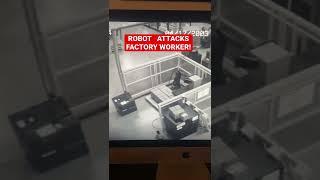My site: https://natebjones.com/
My links: https://linktr.ee/natebjones
My substack: https://natesnewsletter.substack.com/
Takeaways
1. Software 3.0 Paradigm Shift: Andrej Karpathy argues the next “language” of coding is English, forcing teams to rethink every layer of software design—from data pipelines to deployment.
2. LLMs as “People Spirits”: Large language models are stochastic simulations with jagged intelligence; they feel human but still need tight human supervision and constrained output.
3. Human-in-the-Loop by Design: Success hinges on making validation frictionless and deliberately limiting AI generation so reviewers can keep up.
4. Builder Honesty vs. Boardroom Hype: Karpathy names CI/CD gaps and edge-model limits, while McKinsey’s “agentic mesh” offers a seductive yet unbuildable fairy tale.
5. Enterprise AI Reality Check: Plug-and-play agents and tiny edge models don’t exist; incremental crawl-walk-run adoption with clear culture change is mandatory.
6. Risk of Consultant Oversimplification: CEO faith in word-salad frameworks stalls projects and wastes budgets—tech leaders must push for empirically grounded plans.
7. Edge Computing Debate: Despite bets from Apple and others, large centralized models still outperform small edge deployments in 2025; prudence beats hype.
Quotes
“Treat large language models as ‘people spirits’—they feel human, but they still need a leash and a supervisor.”
“Software 3.0 is about building Iron-Man suits: AI augments our reach, yet humans stay in the cockpit.”
“McKinsey’s ‘agentic mesh’ is comforting fiction—there’s no USB port that lets any model magically run any workflow.”
Summary
In this talk I contrast Andrej Karpathy’s builder-centric “Software 3.0” vision with McKinsey’s consultant-driven “agentic mesh.” Karpathy sees large language models as “people spirits”—stochastic simulations that require tight human oversight, short-leash generation, and redesigned data pipelines. He urges teams to treat English as the new programming interface yet remain realistic about jagged intelligence and deployment gaps. McKinsey, by contrast, packages a comforting fiction for CEOs, promising plug-and-play agents and commodity edge models that don’t exist. I warn that believing such pitches breeds failed enterprise projects; instead we must tell harder truths and cultivate a culture of incremental, validated AI.
Keywords
Software 3.0, Andrej Karpathy, McKinsey, agentic mesh, large language models, people spirits, human-in-the-loop, jagged intelligence, edge computing, enterprise AI, culture change, validation loops, builders vs consultants
My links: https://linktr.ee/natebjones
My substack: https://natesnewsletter.substack.com/
Takeaways
1. Software 3.0 Paradigm Shift: Andrej Karpathy argues the next “language” of coding is English, forcing teams to rethink every layer of software design—from data pipelines to deployment.
2. LLMs as “People Spirits”: Large language models are stochastic simulations with jagged intelligence; they feel human but still need tight human supervision and constrained output.
3. Human-in-the-Loop by Design: Success hinges on making validation frictionless and deliberately limiting AI generation so reviewers can keep up.
4. Builder Honesty vs. Boardroom Hype: Karpathy names CI/CD gaps and edge-model limits, while McKinsey’s “agentic mesh” offers a seductive yet unbuildable fairy tale.
5. Enterprise AI Reality Check: Plug-and-play agents and tiny edge models don’t exist; incremental crawl-walk-run adoption with clear culture change is mandatory.
6. Risk of Consultant Oversimplification: CEO faith in word-salad frameworks stalls projects and wastes budgets—tech leaders must push for empirically grounded plans.
7. Edge Computing Debate: Despite bets from Apple and others, large centralized models still outperform small edge deployments in 2025; prudence beats hype.
Quotes
“Treat large language models as ‘people spirits’—they feel human, but they still need a leash and a supervisor.”
“Software 3.0 is about building Iron-Man suits: AI augments our reach, yet humans stay in the cockpit.”
“McKinsey’s ‘agentic mesh’ is comforting fiction—there’s no USB port that lets any model magically run any workflow.”
Summary
In this talk I contrast Andrej Karpathy’s builder-centric “Software 3.0” vision with McKinsey’s consultant-driven “agentic mesh.” Karpathy sees large language models as “people spirits”—stochastic simulations that require tight human oversight, short-leash generation, and redesigned data pipelines. He urges teams to treat English as the new programming interface yet remain realistic about jagged intelligence and deployment gaps. McKinsey, by contrast, packages a comforting fiction for CEOs, promising plug-and-play agents and commodity edge models that don’t exist. I warn that believing such pitches breeds failed enterprise projects; instead we must tell harder truths and cultivate a culture of incremental, validated AI.
Keywords
Software 3.0, Andrej Karpathy, McKinsey, agentic mesh, large language models, people spirits, human-in-the-loop, jagged intelligence, edge computing, enterprise AI, culture change, validation loops, builders vs consultants
- Category
- Artificial Intelligence












Comments